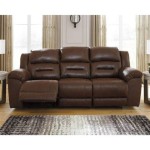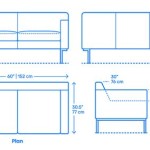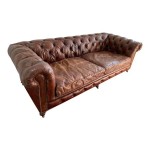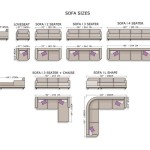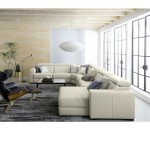What Sofa Is the Most Comfortable? Unpacking the Factors Behind Ultimate Relaxation
The pursuit of the “most comfortable sofa” is a deeply personal quest. What one individual deems supremely comfortable, another might find lacking. Comfort is inherently subjective, influenced by individual preferences in terms of firmness, support, style, and even the ambient temperature of the room. Defining the most comfortable sofa necessitates examining the factors that contribute to overall relaxation and satisfaction, considering both objective features and individual needs.
Several elements coalesce to create a comfortable sofa. These include the frame’s robustness, the suspension system's resilience, the cushioning’s density and composition, the upholstery fabric’s texture and breathability, and the overall design’s ergonomic considerations. Each aspect plays a crucial role in shaping the seating experience, and understanding their interplay is key to navigating the diverse landscape of sofa options.
Frame and Suspension: The Foundation of Comfort
The sofa's frame serves as its foundational structure, dictating its long-term durability and stability. Hardwood frames, particularly kiln-dried hardwoods like oak and maple, are generally considered superior due to their resistance to warping and cracking. Softwood frames, while more affordable, may be less durable over time and prone to sagging with prolonged use. The frame’s construction significantly impacts the sofa’s ability to maintain its shape and support the weight it bears.
Complementary to the frame is the suspension system, which provides the initial layer of support and shock absorption. Common suspension systems include sinuous springs, eight-way hand-tied springs, and web suspension. Sinuous springs, also known as no-sag springs, are pre-assembled metal wires that span the frame, offering consistent support at a relatively lower cost. Eight-way hand-tied springs, considered a premium option, involve individually tying each spring to the frame and adjacent springs, creating a responsive and uniformly supportive base. Web suspension utilizes interwoven bands of fabric or rubber, providing a flexible and forgiving seating surface. The ideal suspension system depends on the desired level of firmness and the budget, but a well-constructed system is essential for preventing the cushions from sinking or bottoming out over time.
Cushioning: The Heart of Softness and Support
The sofa’s cushioning is arguably the most crucial element in determining its comfort level. Cushioning materials vary widely in their density, resilience, and cost, each offering a distinct seating experience. Common options include foam, down, feathers, fiberfill, and blends of these materials.
Foam cushions are widely used due to their affordability and versatility. High-density foam provides firm support and resists compression, making it suitable for individuals who prefer a more structured seating experience. Lower-density foam offers a softer feel but may sag more quickly over time. Memory foam conforms to the body's contours, providing personalized support and pressure relief. However, some individuals may find memory foam too warm or slow to respond to movement. The Indentation Load Deflection (ILD) rating of foam indicates its firmness; a higher ILD rating denotes a firmer foam.
Down and feather cushions offer a luxurious and exceptionally soft seating experience. They conform to the body's shape and provide excellent insulation. However, down and feather cushions require regular fluffing to maintain their shape and prevent clumping. They may also trigger allergic reactions in sensitive individuals. Blends of down and feathers with other materials, such as foam or fiberfill, can offer a balance of softness and support while mitigating some of the drawbacks of pure down cushions.
Fiberfill cushions, typically made of polyester fibers, are a cost-effective alternative to down and foam. They offer a relatively soft and plush feel but lack the resilience of higher-quality materials. Fiberfill cushions tend to flatten and lose their shape more quickly than foam or down cushions, requiring frequent replacement.
The optimal cushioning composition depends on individual preferences for firmness, support, and maintenance. A combination of materials, such as a foam core wrapped in down or fiberfill, can often provide the best of both worlds, offering both support and softness.
Upholstery: The Tactile and Aesthetic Element
The sofa's upholstery plays a significant role in comfort, influencing its tactile feel, breathability, and overall aesthetic appeal. Upholstery materials range from natural fibers like cotton and linen to synthetic fibers like polyester and microfiber, as well as leather and blends of different materials. Each fabric offers distinct advantages and disadvantages in terms of durability, stain resistance, and comfort.
Cotton is a natural fiber that is soft, breathable, and relatively affordable. However, cotton is susceptible to staining and fading, requiring regular cleaning and care. Linen is another natural fiber known for its strength, durability, and breathability. Linen has a slightly coarser texture than cotton and is prone to wrinkling, but its natural beauty and resistance to wear make it a popular choice for sofas.
Polyester is a synthetic fiber that is highly durable, stain-resistant, and affordable. Polyester fabrics are available in a wide range of colors and textures, making them a versatile option for sofas. Microfiber is a type of polyester that is exceptionally soft and plush, making it a popular choice for families with children and pets. Microfiber is also resistant to stains and easy to clean.
Leather is a luxurious and durable upholstery material that develops a unique patina over time. Leather is available in various grades, each offering a distinct level of quality and durability. Top-grain leather is considered the highest quality, while bonded leather is a less expensive alternative made from scraps of leather that are bonded together. Leather is relatively easy to clean and maintain, but it can be prone to scratches and fading.
The choice of upholstery material depends on individual preferences for texture, durability, and maintenance. Natural fibers offer a soft and breathable feel, while synthetic fibers provide enhanced durability and stain resistance. Leather offers a luxurious and timeless aesthetic, but it requires more care and maintenance than other materials.
Ergonomics and Design: Supporting Posture and Relaxation
Beyond the materials used in its construction, the sofa’s overall design and ergonomics significantly impact its comfort. The height of the backrest, the depth of the seat, and the angle of the armrests all contribute to the overall seating experience. A sofa that is ergonomically designed will support proper posture and reduce strain on the back, neck, and shoulders.
The backrest height should be sufficient to provide adequate support for the upper back and neck. A higher backrest is generally more comfortable for individuals who prefer to sit upright, while a lower backrest may be more suitable for those who prefer to lounge or recline. The seat depth should be appropriate for the individual's height, allowing them to sit comfortably with their feet flat on the floor. A seat that is too deep can cause slouching and discomfort.
The armrests should be positioned at a comfortable height and angle, providing support for the arms and shoulders. Armrests that are too high or too low can cause strain and discomfort. The overall design of the sofa should also consider the individual's lifestyle and preferences. A modular sofa, for example, offers flexibility and versatility, allowing the user to customize the configuration to suit their needs. A sectional sofa provides ample seating space, while a loveseat is a more compact option for smaller spaces.
Ultimately, the most comfortable sofa is the one that best meets the individual's specific needs and preferences. By considering the frame, suspension, cushioning, upholstery, and ergonomics, individuals can make informed decisions and select a sofa that provides lasting comfort and relaxation.

15 Most Comfortable Couches Sofas Of 2024

The World S Most Comfortable Sofa House Of Mcgregor Sofas Furniture Bedding

The 20 Most Comfortable Sofas Of 2024 Purewow

The 16 Most Comfortable Couches 2024 Tested By Interior Designers And Editors

15 Most Comfortable Couches Sofas Of 2024

The 20 Most Comfortable Sofas Of 2024 Purewow

15 Most Comfortable Couches To Elevate Your Home In 2024

15 Most Comfortable Couch Options 2024 Where To Buy Comfy Sofas

Sofa Guide For 2024 Reviews By Wirecutter

The 20 Most Comfortable Sofas Of 2024 Purewow
Related Posts

